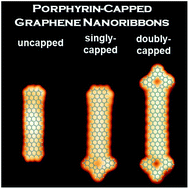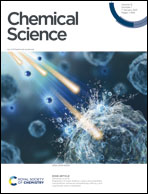On-surface synthesis of singly and doubly porphyrin-capped graphene nanoribbon segments†
Abstract
On-surface synthesis has emerged as a powerful tool for the construction of large, planar, π-conjugated structures that are not accessible through standard solution chemistry. Among such solid-supported architectures, graphene nanoribbons (GNRs) hold a prime position for their implementation in nanoelectronics due to their manifold outstanding properties. Moreover, using appropriately designed molecular precursors, this approach allows the synthesis of functionalized GNRs, leading to nanostructured hybrids with superior physicochemical properties. Among the potential “partners” for GNRs, porphyrins (Pors) outstand due to their rich chemistry, robustness, and electronic richness, among others. However, the use of such π-conjugated macrocycles for the construction of GNR hybrids is challenging and examples are scarce. Herein, singly and doubly Por-capped GNR segments presenting a commensurate and triply-fused GNR–Por heterojunction are reported. The study of the electronic properties of such hybrid structures by high-resolution scanning tunneling microscopy, scanning tunneling spectroscopy, and DFT calculations reveals a weak hybridization of the electronic states of the GNR segment and the Por moieties despite their high degree of conjugation.



 Please wait while we load your content...
Please wait while we load your content...